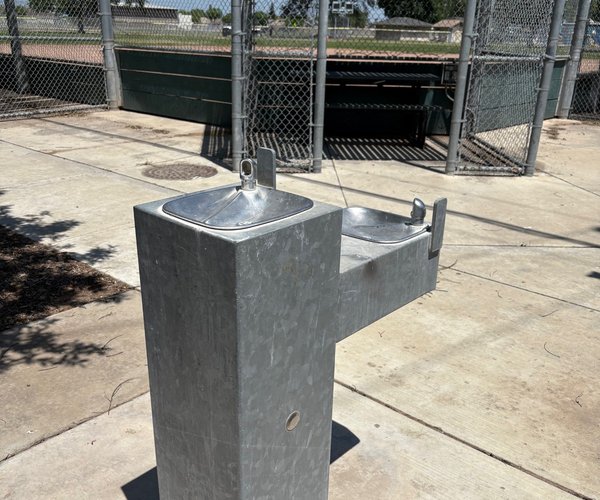It’s the shake-and-sweep season.
It will start in the coming days, if it already hasn’t in some spots.
It’s the modern take on pound and rake.
We’re talking about the almond harvest.
Back as late as the 1960s, there were a fair share of high school football players at Manteca, East Union, Manteca and Ripon who viewed hell week — what many called the first week of mandatory practices designed to whip teen athletes into condition — as a mini-vacation.
It’s because they had been spending time in a family orchard swinging heavily mallets into the trunks of trees.
The goal was to shake loose almonds.
This was back when school didn’t start until after Labor Day.
Classrooms were air conditioned by opening windows.
And the school dress code banned the wearing of shorts and collarless shirts.
The need to help shake loose much of the crop is why there’s a pronunciation “rule ” for almonds designed to explain why many leave the letter “L” out when saying almond.
Simply put, “AH-mund” is almond with the “L” knocked out.
In reality, dictionaries up until the 1950s or so, universally had the “L” as silent.
Pronunciation nuances aside, almonds still have to come down to earth to be harvested.
You could wait to do it “organically” by having Mother Nature do the work.
But if you did, most of the crop would likely hang on just before tule fog season sets in.
That would mean rain and such would make the crop a muddy mess to rake up and to get into burlap bags instead of massive truck trailers.
And what was harvested would have been done so in a labor intensive fashion. That would translate into much higher food prices.
By the time the 1960s rolled around, hydraulic tree shakers had made pounding an almond tree with a mallet until each swing produced not even a drip of nuts old school.
But because the Manteca and Ripon countryside was populated by even more family farms than today, but with many that were much smaller and essentially a “side job” for the head of the household, the technology wasn’t affordable to all.
Or the cost of contracting to shake an orchard with a firm didn’t pencil out for smaller orchards at the time.
If you’ve ever trimmed branches from a tree, you know the process is dusty and dirty.
Now think what it would be like if you stood under a tree’s canopy and swung away at its trunk with a heavy mallet.
Keep in mind the last rain of consequence was likely five or so months prior.
An almond tree accumulates dirt and debris on its branches plus breaks loose with a lot of twigs and leaves.
Multiply that by 15 million almond trees or so in San Joaquin County with the added twist of 90 to 100 degrees days during harvest, and you have a dusty and dirty process.
And it’s all so someone can make a living and the world can have almonds to snack on, Almond Joy candy bars to savor, and sliced almonds in salads and culinary creations.
You get the picture.
Growing almonds — just like all farming — is dusty and dirty work.
And it also can be back breaking.
It is nothing like going to an air-conditioned Safeway and grabbing a can of already shelled and — if you are hellbent on butchering its natural flavor — seasoned almonds.
There is a dirty, and often smelly process, to get food to your table.
That is particularly true on the front end when it comes to field crops, dairies, livestock, and orchards.
Keep this in mind in the coming days when the whining starts on social media.
It won’t be as bad in previous years, given Manteca’s No. 1 crop — single family homes — has been planted in the past year mostly in the southwest section of the city where there are few nearby orchards.
That said, the need to plow fields under after harvest to prepare the dirt for the next planting will certainly send some dust their way.
There will be complaints about “dirty farming.”
A few will act as if farmers are reckless and are failing to be good stewards of the land.
It’s a bizarre attack line given farmers can ill afford not to be good stewards.
They can ill afford to mistreat land just like they can ill afford to waste water, or overuse pesticides and such.
Besides the latter two being expensive — especially so if you have to pay PG&E to pump water — once you’ve wrecked soil you’re out of business.
There is constant research and innovation going on to minimize the side effects of farming including dust control.
There was likely always be dust problems and such as you can’t grow food to feed the masses without it.
That said, the environmental concerns connected with farming have steadily declined over the years.
What hasn’t, in many cases, are the expectations of someone whose previous address was in the cooler Bay Area in an urban environment of manicured neighborhoods buying an $800,000 tract home backing up to orchards, vineyards or row crops
It is why in Manteca — as well as the rest of San Joaquin County — you must sign a document before the close of escrow that this is right-to-farm area.
In signing it, you are acknowledging the fact accepted and standard farming practices aren’t only allowed but they are legal under city and county ordinances.
That means dust when there’s harvesting or doing field work.
It means lights at night and heavy equipment being operates often during harvest time.
And it can mean odors and such.
Most people get that it is part of living in what is the world’s most fertile valley where more than 60 percent of the nation’s fruits and vegetables are produced.
It is also to be expected given the San Joaquin Valley’s eight counties produce crops with a higher combined value than all but six states.
And at $58 billion, California as a whole tops the nation with Iowa in the No. 2 spot trailing at $44.7 billion.
Complain, if you must.
Just remember that you are complaining on a full stomach.
This column is the opinion of editor, Dennis Wyatt, and does not necessarily represent the opinions of The Bulletin or 209 Multimedia. He can be reached at dwyatt@mantecabulletin.com






